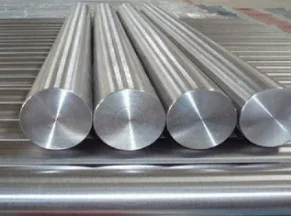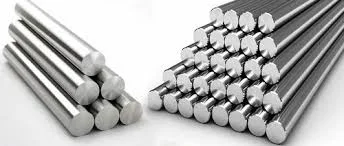High-temperature alloys play a crucial role in various industries, where they are exposed to extreme heat conditions. These alloys are specifically designed to withstand elevated temperatures while maintaining their mechanical strength and resistance to corrosion. In this article, we will delve into the composition and properties of high-temperature alloys, exploring their unique characteristics and applications.
I. Understanding High-Temperature Alloys
High-temperature alloys, also known as superalloys, are a class of materials that exhibit exceptional strength and resistance to high temperatures. They are primarily used in applications where conventional metals would fail due to thermal degradation. These alloys are designed to maintain their mechanical properties and resist oxidation, creep, and corrosion at temperatures above 500°C (932°F).
A.Importance
High-temperature alloys are engineered materials that are specifically formulated to withstand extreme heat conditions. They are widely used in industries such as aerospace, power generation, oil and gas, and industrial furnaces. The ability of these alloys to maintain their strength and integrity at elevated temperatures is crucial for ensuring the safety and efficiency of various applications.
B. Key Industries and Applications
High-temperature alloys find extensive use in industries where they are exposed to extreme heat environments. In the aerospace industry, these alloys are utilized in gas turbine engines, aircraft structures, and exhaust systems. Power generation relies on high-temperature alloys for gas and steam turbines, as well as nuclear reactors. The oil and gas industry employs these alloys in downhole tools, wellhead equipment, and other critical components. Industrial furnaces, such as heat treatment furnaces and incinerators, also rely on high-temperature alloys for their operations.

II. Composition of High-Temperature Alloys
High-temperature alloys are typically composed of a base metal and various alloying elements. The choice of base metal and alloying elements depends on the desired properties and the specific application requirements.
A. Base Metals
1. Nickel-Based Alloys: Nickel-based alloys are the most widely used high-temperature alloys due to their excellent resistance to corrosion and oxidation. They offer high strength, good creep resistance, and thermal stability.
2. Cobalt-Based Alloys: Cobalt-based alloys exhibit exceptional strength and resistance to high temperatures. They are often used in gas turbine engines and other applications that require high-temperature strength and corrosion resistance.
3. Iron-Based Alloys: Iron-based alloys, also known as heat-resistant stainless steels, are used in applications where both corrosion resistance and high-temperature strength are required.
B. Alloying Elements
Alloying elements are added to the base metals to enhance specific properties of high-temperature alloys.
1. Chromium: Chromium improves the oxidation resistance of high-temperature alloys by forming a protective oxide layer on the surface.
2. Molybdenum: Molybdenum enhances the high-temperature strength and creep resistance of alloys.
3. Tungsten: Tungsten improves the strength and stability of high-temperature alloys, particularly at elevated temperatures.
4. Titanium: Titanium is added to improve the high-temperature strength and corrosion resistance of alloys.
5. Aluminum: Aluminum enhances the oxidation resistance and high-temperature strength of alloys.
6. Others: Other alloying elements, such as niobium, tantalum, and rhenium, are also used to tailor the properties of high-temperature alloys for specific applications.
III. Properties of High-Temperature Alloys
High-temperature alloys possess several key properties that make them suitable for extreme heat environments.
A. High Melting Point
High-temperature alloys have significantly higher melting points compared to conventional metals. This property allows them to retain their structural integrity at elevated temperatures.
B. Oxidation Resistance
One of the most critical properties of high-temperature alloys is their resistance to oxidation. The alloying elements in these materials form a protective oxide layer on the surface, preventing further oxidation and degradation.
C. Creep Resistance
Creep is the gradual deformation of a material under constant stress at high temperatures. High-temperature alloys exhibit excellent creep resistance, enabling them to maintain their shape and mechanical strength over extended periods.
D. Thermal Expansion
High-temperature alloys have a relatively low coefficient of thermal expansion, which means they expand and contract less with temperature changes. This property helps to minimize thermal stresses and maintain dimensional stability.
E. Mechanical Strength
High-temperature alloys retain their mechanical strength at elevated temperatures, allowing them to withstand high loads and stresses.
F. Corrosion Resistance
High-temperature alloys exhibit excellent corrosion resistance, making them suitable for applications in aggressive environments, such as those involving high temperatures and corrosive gases.

IV. Applications of High-Temperature Alloys
High-temperature alloys find extensive use in various industries due to their unique properties.
A. Aerospace Industry
In the aerospace industry, high-temperature alloys are used in gas turbine engines, where they withstand extreme temperatures and mechanical stresses. These alloys are also employed in aircraft structures, exhaust systems, and other critical components.
B. Power Generation
High-temperature alloys play a vital role in power generation, particularly in gas and steam turbines. They are used in turbine blades, vanes, and other components that are exposed to high temperatures and mechanical loads. These alloys are also utilized in nuclear reactors, where they provide excellent resistance to corrosion and radiation damage.
C. Oil and Gas Industry
The oil and gas industry relies on high-temperature alloys for various applications. These alloys are used in downhole tools, wellhead equipment, and other components that are exposed to high temperatures, pressures, and corrosive environments.
D. Industrial Furnaces
High-temperature alloys are widely used in industrial furnaces, such as heat treatment furnaces and incinerators. These alloys can withstand the extreme heat and corrosive gases present in these environments, ensuring the longevity and efficiency of the furnaces.
V. Manufacturing and Processing of High-Temperature Alloys
The manufacturing and processing of high-temperature alloys involve several techniques to achieve the desired properties.
A. Melting and Casting
High-temperature alloys are typically produced through melting and casting processes. The base metals and alloying elements are melted together, and the molten alloy is cast into various forms, such as ingots or billets.
B. Powder Metallurgy
Powder metallurgy is another method used to produce high-temperature alloys. In this process, fine metal powders are mixed, compacted, and then sintered to form the desired alloy.
C. Wrought Processing
Wrought processing involves shaping the alloy into the desired form through processes such as rolling, forging, or extrusion. This method helps to refine the microstructure and improve the mechanical properties of the alloy.
D. Heat Treatment
Heat treatment is often employed to enhance the properties of high-temperature alloys. Processes such as annealing, solution treatment, and precipitation hardening are used to optimize the microstructure and improve the mechanical and thermal properties of the alloy.

Conclusion
High-temperature alloys are indispensable materials in industries that operate under extreme heat conditions. Their unique composition and properties enable them to withstand high temperatures while maintaining mechanical strength and corrosion resistance. Understanding the composition and properties of high-temperature alloys is crucial for their successful application in various industries. As technology advances, further research and development will continue to enhance the performance and expand the applications of these alloys, ensuring safer and more efficient operations in high-heat environments.
For more than ten years,Yuesuan Trade has adhered to the mission of building a "trustworthy plate supplier" and focused on providing professional steel services to domestic and foreign customers.
If you are looking for high-temperature alloys solution,welcome to ccontatc us.

